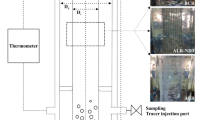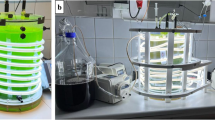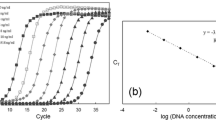Abstract
Wastewater arising from the production of sago starchhas a high carbon to nitrogen ratio, which is improvedwith anaerobic fermentation in an upflow packed beddigester. The digested effluent with an average C: N:P ratio of 24: 0.14: 1 supported growth of Spirulina platensis (Arthrospira) with anaverage specific growth rate (μ) of 0.51day-1 compared with the average μ of 0.54day-1 in the inorganic Kosaric Medium in a highrate algal pond. Supplementation with 6 mM urea and2.1 mM K2HPO4 produced gross biomassproductivity of 14.4 g m-2 day-1. Aflow-rate of 24 cm s-1 increased the μ andgross biomass productivity (18 g m-2 day-1). The highest crude protein, carbohydrate and lipidcontents of the biomass were 68%, 23% and 11%,respectively. Percentage reductions in chemicaloxygen demand, ammoniacal-nitrogen and phosphatelevels of the digested effluent reached 98.0%, 99.9%and 99.4% respectively. The HRAP offers a goodtreatment system for sago starch factory wastewater.
Similar content being viewed by others
References
APHA (1989) Standard Methods for the Examination of Water and Wastewater. 17th edition. American Public Health Association, Washington, DC.
Chew TY, Shim YL (1993) Sago processing wastes. In Yeoh BG, Phang SM, Zaid Isa, Azni Idris, Maktab Mohamed (eds), Waste Management in Malaysia. Current Status and Prospects for Bioremediation. Ministry of Science, Technology and the Environment, pp 159-167.
Chu WL, Phang SM, Goh SH (1995) Influence of carbon source on growth, biochemical composition and pigmentation of Ankistrodesmus convolutus. J. appl. Phycol. 7: 59-64.
Chu WL, Phang SM, Goh SH (1996) Environmental effects on growth and biochemical composition of Nitzschia inconspicua Grunow. J. appl. Phycol. 8: 389-396.
Laliberte G, Olguin EJ, de la Noue J (1997) Mass cultivation and wastewater treatment using Spirulina. In Vonshak A (ed.), Spirulina platensis (Arthrospira) Physiology, Cell Biology and Biotechnology. Taylor and Francis, London, pp. 159-174.
Phang SM, Chu WL (1999) University of Malaya Algae Culture Collection. Catalogue of Strains. Institute of Postgraduate Studies and Research Bibliographies and Research Guides: BPP. Bil.2, University of Malaya, Kuala Lumpur, 77 pp.
Phang SM, Ong KC (1988) Algal biomass production in digested palm oil mill effluent. Biol. Wastes 25: 177-191.
Tanticharoen M, Bunnag B, Vonshak A (1993) Cultivation of Spirulina using secondary treated starch wastewater. Australasian Biotechnol. 3: 223.
Torzillo G, Sacchi A, Materassi R (1991) Temperature as an important factor affecting productivity and night biomass loss in Spirulina platensis grown outdoors in tubular photobioreactors. Bioresource Technol. 38: 95-100.
Vonshak A (1997) Spirulina platensis (Arthrospira) Physiology, Cell Biology and Biotechnology. Taylor and Francis, London, 233 pp.
Author information
Authors and Affiliations
Rights and permissions
About this article
Cite this article
Phang, S., Miah, M., Yeoh, B. et al. Spirulina cultivation in digested sago starch factory wastewater. Journal of Applied Phycology 12, 395–400 (2000). https://doi.org/10.1023/A:1008157731731
Issue Date:
DOI: https://doi.org/10.1023/A:1008157731731




